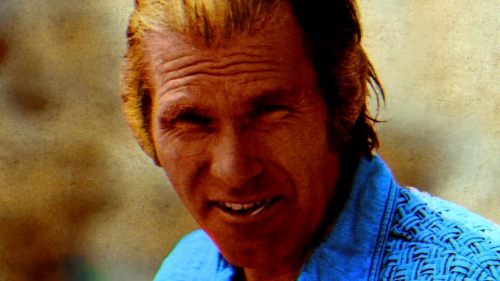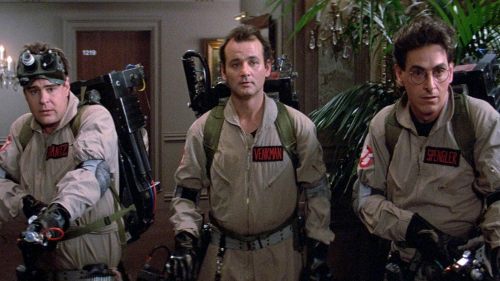Collins’ Crypt: 1979 - The Year Of Dracula
Competing projects in Hollywood are nothing new; there was the year of two volcano movies (1997; Dante's Peak and Volcano), the two asteroid movies in 1998 (Deep Impact and Armageddon), and even, quite astonishingly, two Die Hard ripoffs set inside the White House (last year's Olympus Has Fallen and White House Down). But two is nothing; 1979 produced no less than THREE major Dracula movies, not to mention two other obscure and far looser adaptations (Nocturna and Graf Dracula, both full-blown comedies from what I understand) as well as the television adaptation of Stephen King's Salem's Lot, which was its own story but nonetheless owed a debt to Bram Stoker's classic tale.
But it's the three big screen, well-known films I'm most interested in for the point of this article: John Badham's big budget (and simply titled) Dracula, Werner Herzog's Nosferatu update, and the awesomely titled Love At First Bite, which featured George Hamilton looking for his eternal love in swingin' 1970s New York. From what I understand, the latter was also the most successful at the US box office, possibly killing some of the interest in the far more serious/straight adaptations to come later in the year, but it's also the one that hasn't quite remained in vogue - it's more of a punchline than a fondly remembered film.
However, it's really not all that bad - for my money it's a far more successful attempt at a comedic Dracula than Mel Brooks' Dead and Loving It, which I recall being nearly laugh-free and (oddly) too faithful to the source material, forcing jokes into otherwise straight scenes rather than use Stoker's story as a springboard for comedy, even if events don't play out the same way they do in the book. Indeed, Love At First Bite doesn't even have many of the usual characters from the story - Dracula (Hamilton) and Renfield are pretty much it, unless you count Richard Benjamin as a descendant of Van Helsing. And love interest Cindy (Susan Saint James) is supposedly the reincarnation of Mina Harker, which makes this something of a sequel to the usual Dracula tale (where, if they go that route, Mina or Lucy is the reincarnation of some other woman from Drac's past).
But comedy is the order of the day - even the move from Transylvania isn't due to the usual "I wanted to buy some property" excuse. Instead, Dracula actually loses his castle for financial reasons and is forced to go to New York, giving it a bit of fish out of water vibe along with the expected '70s silliness (read: disco scenes and horrendous/amazing wardrobe). As with just about any comedy of this type, not all of the humor has survived into the 21st century, but when I watched it a few years back for Horror Movie A Day I was shocked to find just how much fun I was having with it. The near total lack of horror (he robs a blood bank in order to feed; the extent of his powers are used for harmless seduction, like turning on sexy music with his telekinesis) actually works in its favor - you want him to succeed as you would any hero, not out of a weird sympathy for a bloodsucking monster. Sure, he's a bit pushy and kind of manipulative of this one woman, but it's certainly never as creepy as Twilight, at any rate.
John Badham's more serious version was poised to be a blockbuster, given that it was his followup to Saturday Night Fever (then one of the highest grossing films of all time) and was given a plum release date in the middle of July - right around the same weekend Jaws had expanded on its initial release four years before. It also boasted a pretty great cast, led by Frank Langella (reprising the role from a Broadway revival production, which this was adapting), Donald Pleasence as Dr. Seward (a role often minimized or excised entirely from other versions) and Laurence Olivier (!) as Van Helsing. Alas, while it earned back its budget and probably made a profit eventually, its gross was less than half of what Love at First Bite pulled in, not to mention a huge drop from Saturday Night Fever. Thankfully, Badham's career would bounce back in 1983 thanks to Blue Thunder and WarGames - two of that year's highest grossing film (with the latter outperforming the SNF sequel Staying Alive - that must have felt good).
Personally, this is one of my favorite Dracula films, even if part of it may be the result of some latter day revisionism on Badham's part. When I saw it a few years back, part of what I loved was the muted color, providing a stark contrast from the lush colors of the Hammer Drac films - but this was something Badham did later on, apparently, as the theatrical version was indeed quite vibrant, from what I understand. I don't know if it would detract from my enjoyment to see it the way it was originally presented, but it's kind of funny that this was one of the things that I found most appealing about it.
The other thing was, of course, Pleasence as Dr. Seward. Apparently he was offered Van Helsing but turned it down since it'd be too similar to Dr. Loomis (Halloween hadn't even been released yet when this began filming), though I doubt anyone would claim the movie was the poorer for it. Since his name is synonymous with "amazing actor," it's hard to imagine a finer actor inhabiting the role of Van Helsing than Olivier, and by casting an actor of Pleasence's caliber as Seward, the role gets an importance it often lacks - which in turn helps set this apart from other Dracula adaptations, where Seward is usually a character that could have easily been removed from the story. Even in 1979 there had been dozens of films already, so anything that could set one apart from another (without just simply being rubbish) was a good thing.
One of the earliest adaptations wasn't really one at all - the 1922 Nosferatu was the result of a failed attempt to get the rights for a proper version, and was nearly lost forever when the Stoker estate sued, (correctly) claiming that F.W. Murnau's attempts to revise his version to avoid infringement weren't quite successful. Really, all Murnau did was change the names and the ending, creating the now standard "Sunlight kills vampires" idea in the process - something that hilariously found its way into legit Dracula movies. Werner Herzog's remake, Nosferatu The Vampyre, was the final major release of 1979's vampire hat trick and something of a blend between the 1922 Nosferatu and a standard Dracula adaptation, in that he recreated Max Schreck's legendary appearance for Klaus Kinski's version of the villain, but was able to use all of the real names - Orlok was not just a carbon copy of Dracula, he actually bore his name this time around.
But of course, it's a Herzog version of a horror movie, which means there are a lot of meditative scenes of people just walking around (Harker's journey to Dracula's castle takes 15-20 minutes) and lengthy wordless shots set to music (Drac's boat arriving in Wismar is a fine example). There are also some charming moments of oddball humor, like Harker's overly labored attempt to get a coach, or the random shots of kittens playing with a locket during the opening titles. I like the film, but it's definitely one you have to be in the mood for - there isn't a lot of action, and the ending is more of a bummer than usual.
However, if you are in the mood, you'll find quite a lot to like here. The score, featuring selections from Wagner and Gounod alongside original compositions, is quite wonderful, and Kinski lives up to both other traditional Draculas as well as Schreck's iconic original performance (his little whimper when he sees a crucifix will never not make me laugh). Apparently, the notoriously volatile Kinski was actually quite patient and well behaved with the makeup crew despite what is clearly an elaborate appliance (it required him to sit there for hours, which can get ANYONE cranky), which translated to a fine turn as the monster, deftly playing the scare scenes as well as the rather melancholy ones. Also: Isabelle Adjani as Lucy. No further explanation should be required.
Scream Factory recently released Nosferatu The Vampyre on Blu-ray, which comes with not one but two Herzog commentaries as well as both versions of the film, as the filmmaker was required to film in English as well as German. The films are the same as far as dialogue and editing goes, but dialogue scenes and closeups have slight differences that make for an interesting back to back viewing experience if you have the time and patience. A vintage EPK is also included, making for a nice package overall for what is a rather unusual addition to their line. It's also the only one of the three to hit Blu-ray; Dracula had a decent release on DVD (with a rather dull Badham commentary accompanying a decent retrospective piece), but Universal has yet to port it to high def (at least here in the US), and Love at First Bite was only released on a full frame, bare bones DVD that is now out of print. I doubt it will benefit much from a new transfer, nor are there likely any hardcore fans of the film demanding a 3-hour documentary, but for the former, it'd be great to see in glorious 1080p, and perhaps with the original color timing for purists.
It's nearly impossible to gauge just how many versions of the Dracula story have been adapted for feature films; even if you discount the ridiculous entries like Dracula 2000 (where it was revealed that Drac was actually Judas Iscariot!) and the unrelated Dracula 3000, which took place in space and used the sun to kill him in a much more up-close and personal way than usual, you'd still be left with probably 200 of the damn things. The novel's public domain status (as of 1962, though in the US it's always been there due to a copyright goof on Stoker's part) means anyone can use him in their film without worry, and it seems there is always another film or TV show in the works about the poor bastard. But the trio of 1979 films represent the finest of the spectrum - you get the more or less straight version (Dracula), the more experimental take (Nosferatu), and even the comedic version (Love at First Bite), each with their strengths and weaknesses, all proving that this one tale can provide many different - and often successful - ways for audiences to be entertained.



